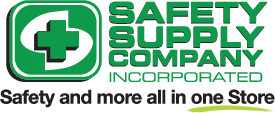The Human Element to Safety- Behavior Based Safety

Technology has made it easier for us to implement practical and functional safety measures within numerous industries. This however will never fully eliminate the human element in maintaining safe working environments.
There is a school of thought centered around “Behavior-based Safety” which is ‘the application of the science of behavior change to real-world safety problems.’
It essentially uses safety observations to regulate and identify the strengths and weaknesses within safety programs of any organization. In addition to the policies of the company, the safety technology, and programs, regular monitoring of the employees’ safety behavior and their integrated feedback of the policies and practices within the workplace, work in tandem to create environments that are secure, safe, and efficient for those who have to operate within them.
Behavior-based Safety involves collecting measurable data from observable behavior such as what you see, hear or experience among the employees regarding their approach to safety measures. You should focus on behavior that is within the control of the employees and has positive or corrective outcomes.
Using this data, you should then set goals that will positively impact the overall safety of the organization and the safety mentality of the employees.
Within BBS, there is the “ABC Model.”
-Antecedent means “something that comes before”
-Behavior is the action or pattern which comes about because of the situation
-Consequences are the outcomes that result from the behavior.
Using this model, you can gather the data necessary to look not only at the environment and safety protocols but also the human contribution to a safe or unsafe environment. It aids in the facilitation of change by minimizing the consequences that occur and guides it from negative reinforcement towards positive outcomes.
To help you further understand the above, let’s look at two companies, one which doesn’t incorporate BBS practices and one which does:
Both are faced with the following scenario (the antecedent) - the organization has a safety policy in place regarding the use of gloves when operating the machinery, however, they observe that their employees are frequently found flouting the policies (the behavior) and not using the gloves where required. One employee already received a partial cut from nicking their hand on the edge of the machinery (the consequences). After a meeting with the safety committee of the company, the goal identified is to have the employees meeting the requirements of wearing their gloves.
In company 1, which doesn’t incorporate BBS practices, the supervisor does not hesitate to write up six employees for not wearing the gloves required in an attempt to enforce the rules. They did so indiscriminately and without discussing with the employees why there was careless behavior towards wearing the gloves.
Company 1 now has several employees who have blemishes upon their record (negative outcomes) and it has affected team morale. On top of this, the safety issue regarding the gloves remains, as employees wear the gloves after being reprimanded but their adherence to the rule only lasts a short while before offending again.
In Company 2, where they have incorporated BBS to work with their safety policies, the supervisor has noticed that six employees who operate the machinery do not wear gloves as they should. The supervisor approaches them, explains the risk and policies again, and asks the employees why they are not adhering to the safety rules. The response is that the gloves are bulky and made it awkward to operate the machinery, which in turn led to a higher safety risk when compared to not wearing the gloves at all.
With this feedback, Company 2 was able to acquire less bulky gloves that offered similar protection to the previous brand (positive outcome). This impacts the behavior of the six employees moving forward, as the employees felt heard and involved with maintaining safety practices which directly impacted their job. They made a point of ensuring they wore the gloves and even reminded others if they saw slips in this safety procedure.
In summary, after observing the negative behavior of not wearing the gloves and seeking to address the reason behind the behavior, rather than focusing only on enforcing safety policies by hook or crook, Company 2 was able to moderate the risk of the human behavior thwarting the safety practices and standards of the company.
It is important to note that BBS is not about seeking out who to blame nor is it about placing sole responsibility for safety incidents upon the shoulders of the employees. Rather, it can be argued that it is about creating an environment of open communication, where all members are safety aware and working together to reduce risks.
Behavior-based Safety is adaptable to each company to work concurrently with your organization’s safety measures - it incorporates understanding your company structure, culture, and specific needs.
To learn more about Behavior-based Safety, check here: https://bit.ly/3yZEcZX
-----------
Safety Supply Co. Inc. is the leading supplier of safety solutions and products in Barbados. Visit www.safetysupplco.com or contact us at 246.426.4935 or info@safetysupplyco.com.
Blog Articles
Check out more articles
PPE: The Unspoken Love Language
Wearing PPE: Protecting Your Present and Securing Your Future
View MoreTips to Improve Safety While Working With Heavy-Duty Mobile Equipment
Improving the safety of ground personnel working around mobile equipment, such as forklifts, excavators, etc., requires a combination of engineering controls, administrative measures, and behaviora
View MoreWhy You Should Service Your Safety Equipment
Safety equipment serves as the frontline defense against workplace hazards, ensuring the well-being of employees and minimizing risks.
View More



